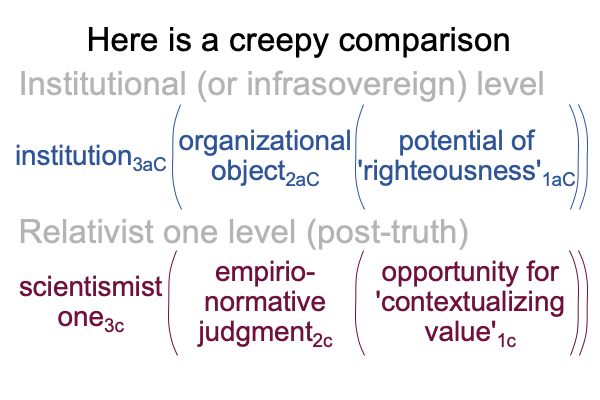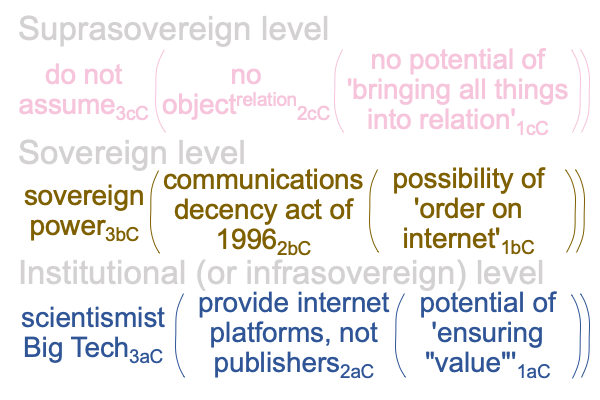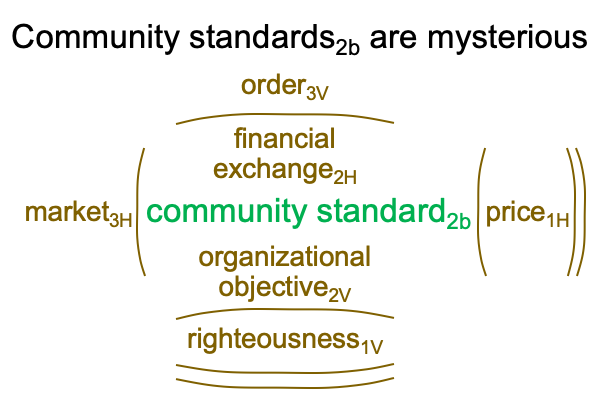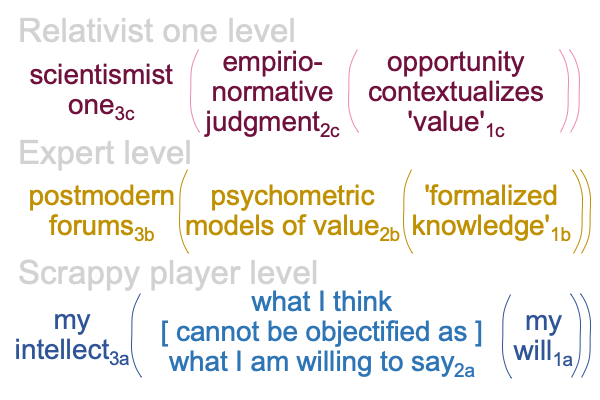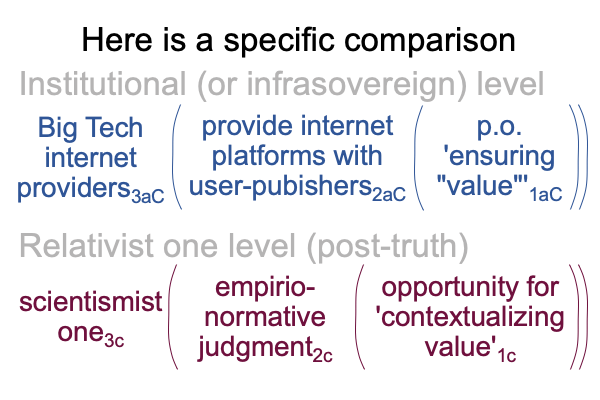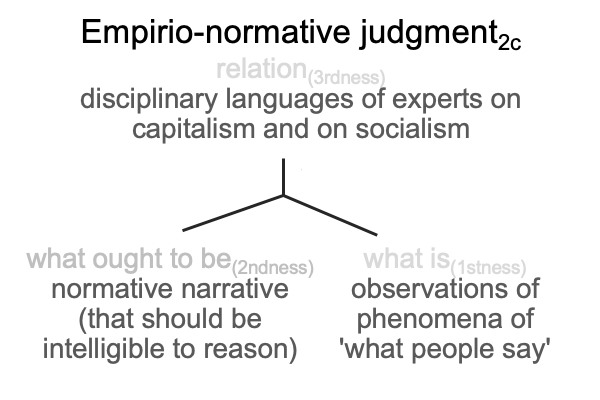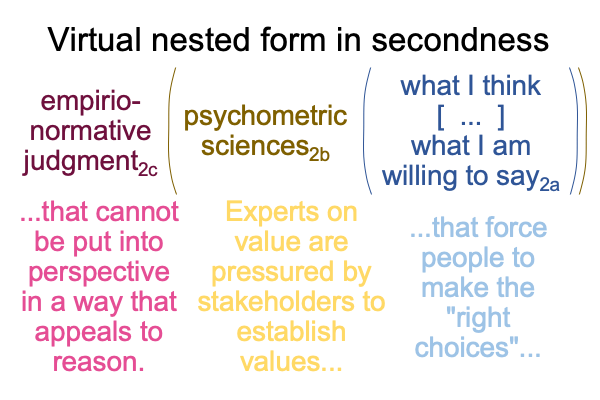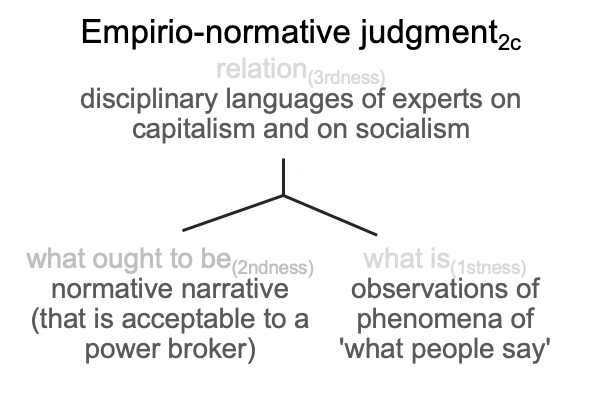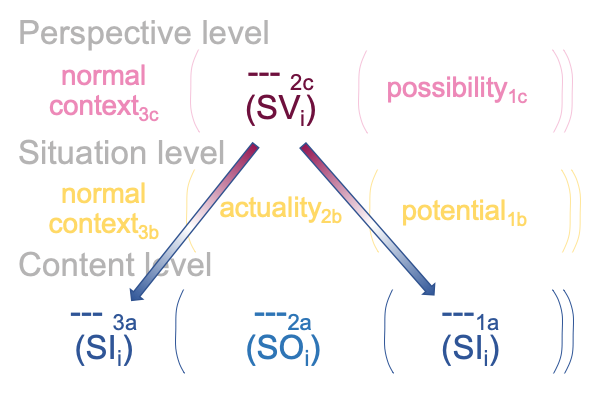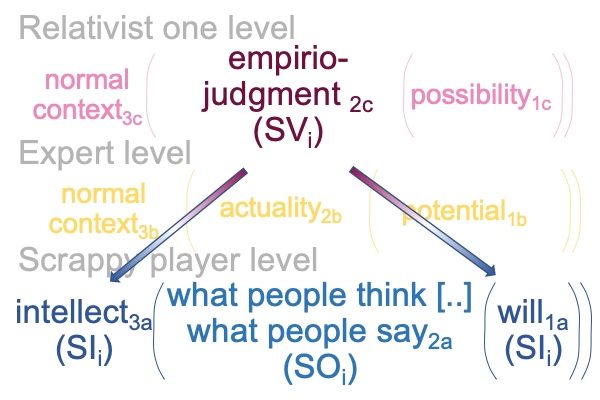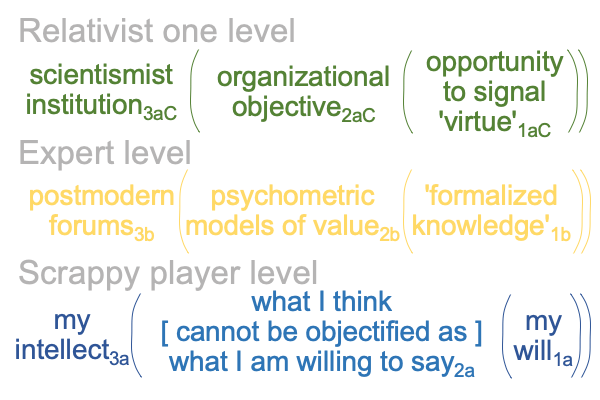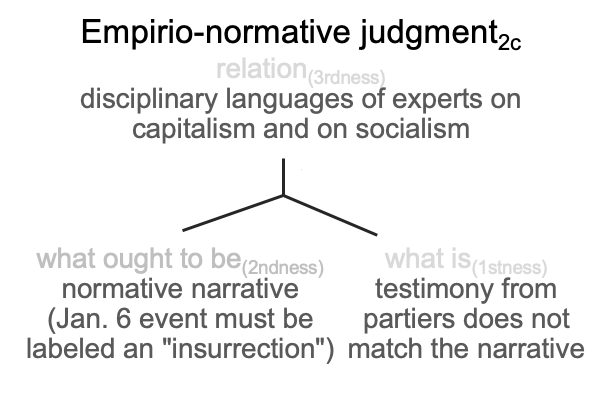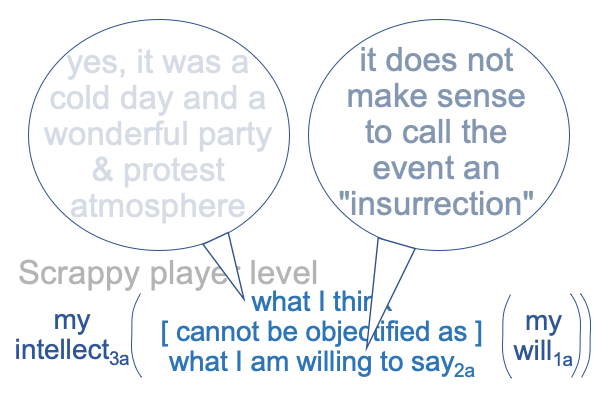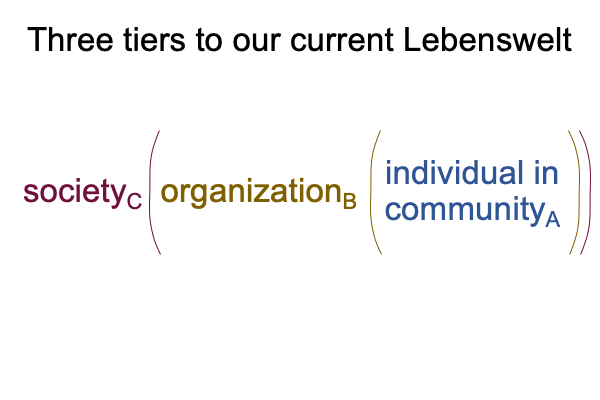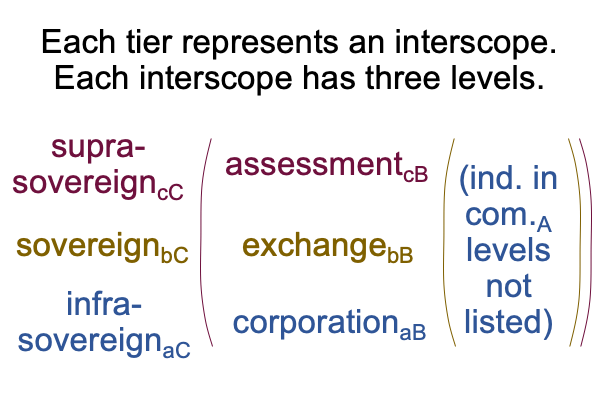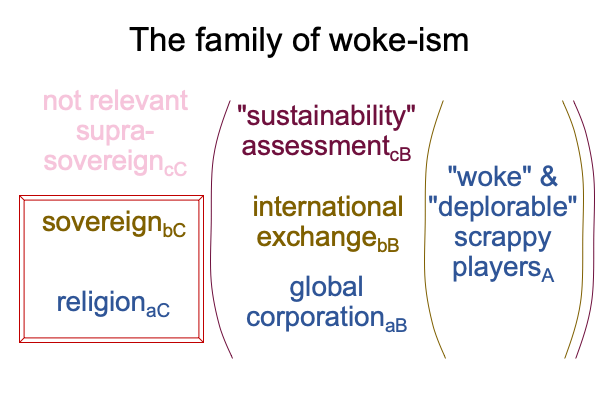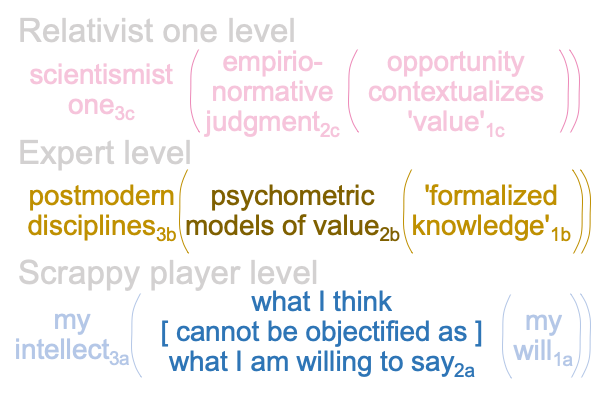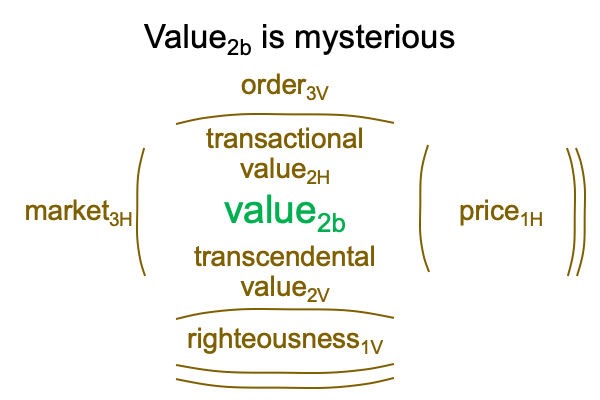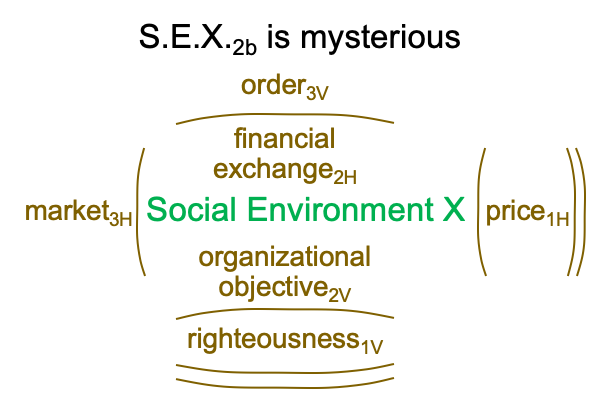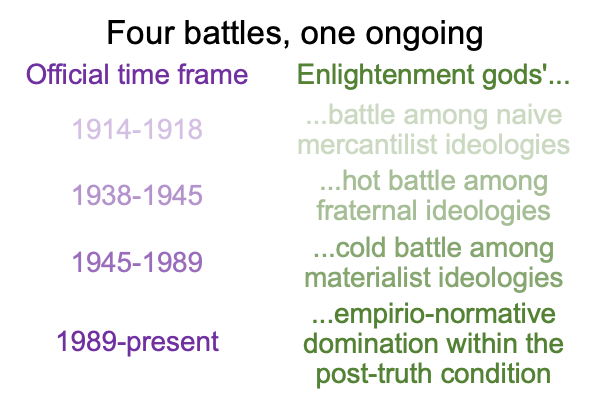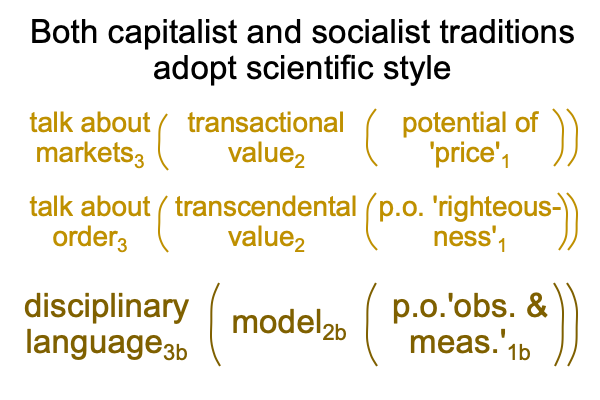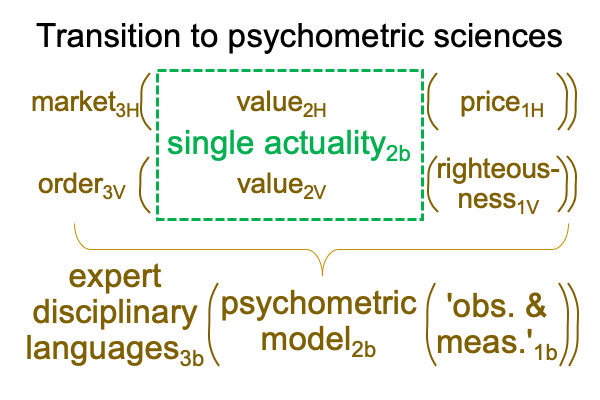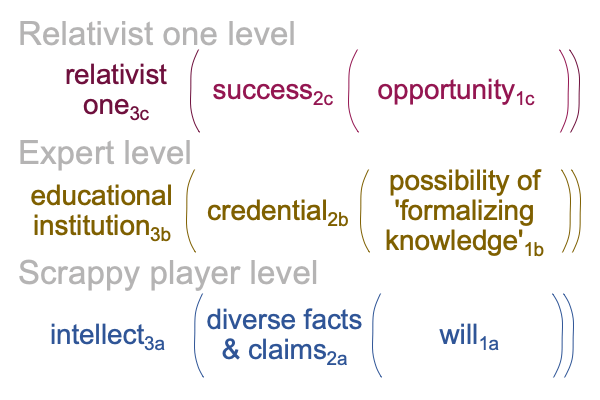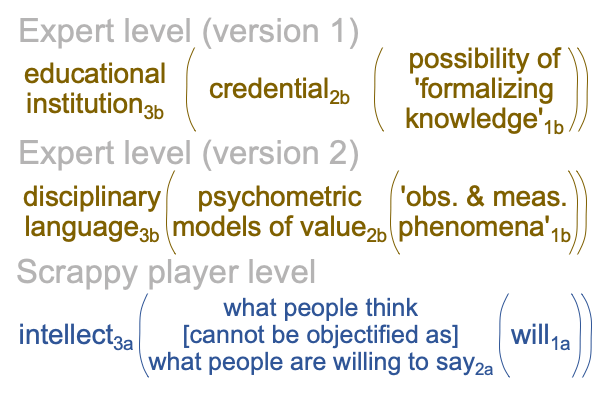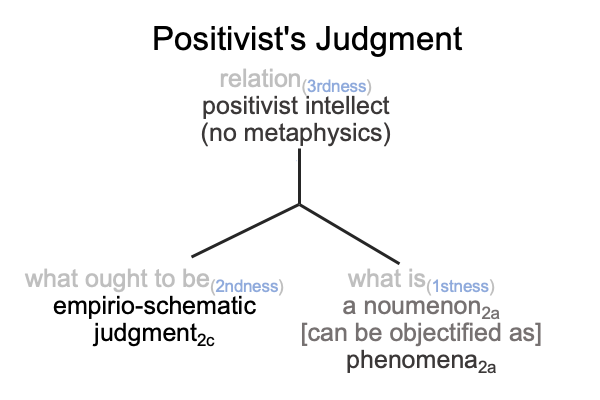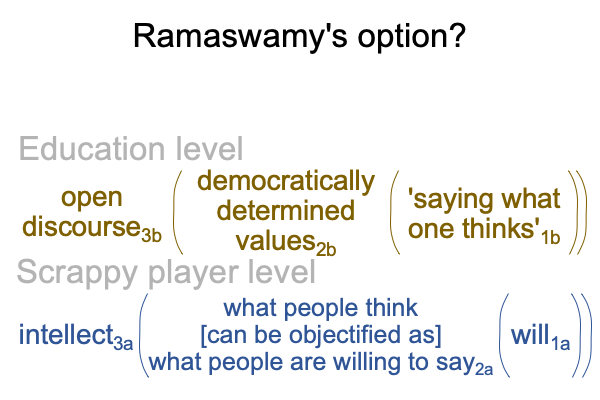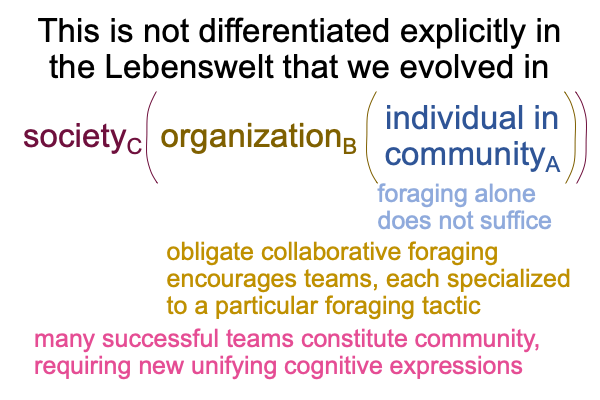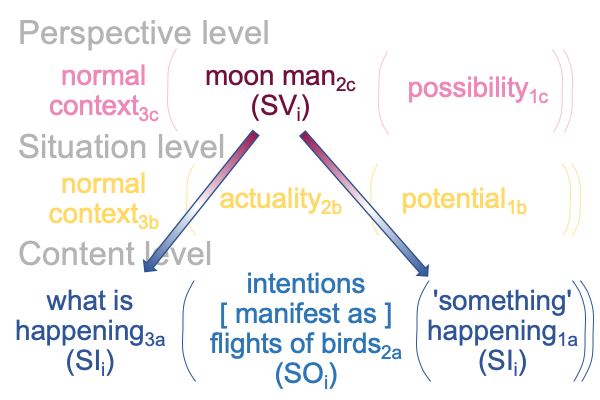Looking at Vivek Ramaswamy’s Book (2021) “Woke, Inc.” (Part 8 of 20)
0341 Chapter ten introduces the idea that wokeism may be a religion.
Since I am obviously going backwards, through Ramaswamy’s text, let me review.
My examination of chapter eleven shows how the interscope for the scientismist one3c technically expresses the three potentials that underlie the word, “religion”. Therefore, since sovereign power is implicated in establishing the scientismist one3c, the American federal government has established a religion, in violation of the first amendment of the Constitution.
I dare anyone to litigate that!
0342 Well, litigation aside, Ramaswamy introduces his idea by recounting the story of the Grand Inquisitor in Dostoevsky’s novel, The Brothers Karamazov.
The Grand Inquisitor meets Jesus, the Christ, who has returned (and, of course, is now imprisoned). The Inquisitor explains to Jesus that Christ did not need to return, because the Church discovered that people are incapable of doing good, therefore the Church has solved the problem by forcing them to do good in the name of Christ.
0343 The irony is clear, although difficult to explicate.
There seems to be two religious objects in the story. One2cC is represented by Christ. One2aC is described by the Grand Inquisitor as an organizational objective of the Church. The two religious objects become apparent when looking at the interscope of the societyC tier.
0344 Once again, the following comes from the chapter on “presence” in How To Define The Word “Religion”.
The societyC tier brings the organizationB tier into relation with the potential of the individual in communityA tier.
0345 That is foundational.
Each tier represents an interscope.
So, the big picture entails nested forms (A,B,C) composed of nested forms (a,b,c) composed of nested forms (1,2,3).
That is to say, three tiers (A,B,C) of interscopes, each containing three category-based nested forms (a,b,c).
0346 Here is the interscope for the societyC tier.
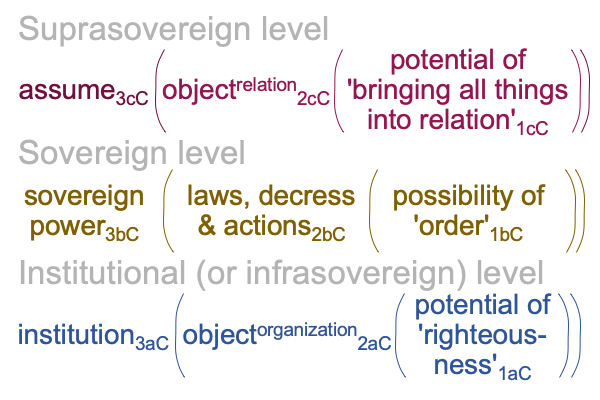
0347 On the content level, the normal context of an institution3aC brings the actuality of organizational objectives2aC into relation with the potential of ‘righteousness’1aC. Righteousness1cC puts the organizationB tier into perspective.
On the situation level, the normal context of sovereign power3bC brings the actuality of laws, decrees and sovereign actions2bC into relation with the possibility of ‘order’1bC. Order1bC situates the institutionaC level.
On the perspective level, the normal context of the act of assuming3cC brings the actuality of a relational object2cC into relation with the possibility of ‘bringing all things into relation’1cC. ‘Concilience’1cC or ‘reconciliation’1cC or ‘creation’1cC puts the sovereignbC level into perspective.
0348 Let me go back to the Grand Inquisitor. Ramaswamy tells the story.
The Grand Inquisitor’s view comports with the institutiona level of the societyC tier.
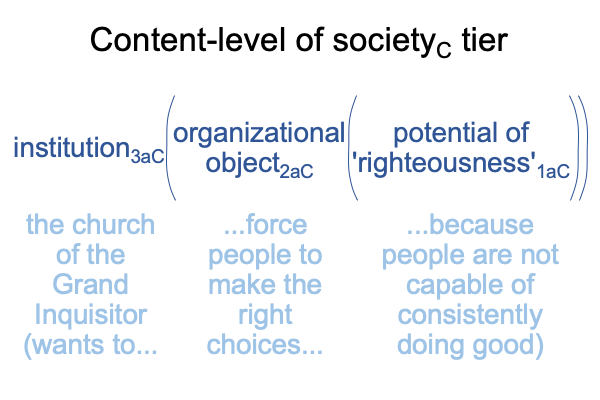
The normal context of the “church”3aC brings the actuality of the need to force people to make the right choices2aC into relation with the possibility that people should do good, but are incapable of doing so1aC.
0349 Organizational objectives2aC contribute to the presence underlying the word, “religion”. The Grand Inquisitor’s “church” may be called an infrasovereign religion. The various organizational objectives2aC of “wokeism” deserve the same label, including the example that Ramaswamy chooses to discuss in chapter ten. He calls the example, The Church of Diversity.
0350 Organizational objects2aC are not the only contributors to the presence underlying the word “religion”. A relational object2cC occupies the perspective-level actuality. The virtual nested form in the realm of actuality helps me to appreciate the two styles of religion that appear in the societyC tier.
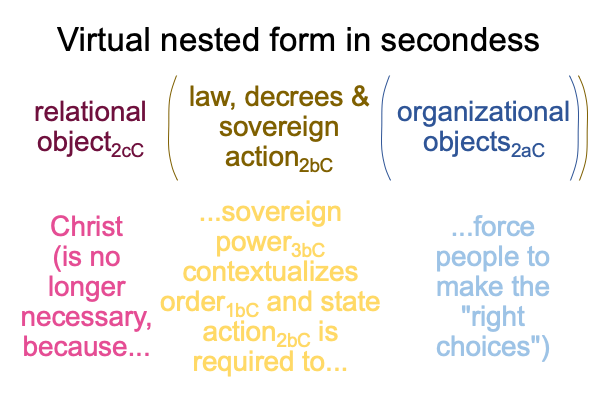
0351 The normal context of a relational object2cC virtually brings the actuality of exercises of sovereign power2bC into relation with the potential of organizational objectives2aC. This makes sense because (on the perspective level) one relational object2cC emerges from (and situates) the potential of all things coming into relation1cC and (on the content level) many organizational objects2aC emerge from (and situate) the potential of righteousness1aC. Correspondingly, righteousness1aC not only contextualizes the organizationB tier, righteousness1aC may orient its institution3aC towards the assumption3cC that, indeed, all things can be brought into relation1cC.
Theoretically, order1bC does not need to be imposed when righteousness1aC both contextualizes and orients. Sovereign power3bC is not necessary when the objectrelation2cC and objectsorganization2aC are in communion. IndividualsA should enter organizationsB that are contextualized by righteousnessC and each institutional expression of righteousness1aCshould be able to come into relation with all other expressions of righteousness1aC because all1cC honor the same relational object2cC.
In this way, Jesus receives the honorific “King2cC of kings3bC“.
0352 Well, the Grand Inquisitor3aC is not going to have any of that!
As he3aC explains to the one2cC that he has signed the decree to execute, Christ2cC is no longer necessary because the “Church3aC” has learned that sovereign power3bC establishes order1bC and state action2bC is required to force people to make the right choices2aC. Why? People are not capable of consistently fulfilling the righteousness that satisfies the Grand Inquisitor1aC.
0353 What does this imply?
If the scientismist one3c of the post-truth interscope is the dominant divine instrument3aC in the Fourth Battle of the Enlightenment Gods (1989-present) then there is no need of a relational object2cC, in the same way that the Christian church of the Grand Inquisitor3aC no longer needs Christ2cC.

